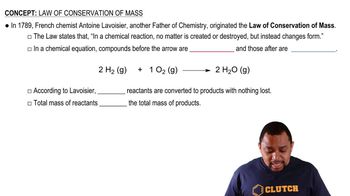Here are the essential concepts you must grasp in order to answer the question correctly.
Heat Transfer and Conservation of Energy
In thermodynamics, the principle of conservation of energy states that energy cannot be created or destroyed, only transformed. In this scenario, the heat lost by the steam as it condenses and cools must equal the heat gained by the water as it warms up. This relationship allows us to set up an equation to solve for the final temperature of the mixture.
Recommended video:
Law of Conservation of Mass
Specific Heat Capacity
Specific heat capacity is the amount of heat required to raise the temperature of a unit mass of a substance by one degree Celsius. Different substances have different specific heat capacities, which affect how they respond to heat transfer. In this problem, the specific heat capacities of steam and water will be crucial for calculating the heat exchange during the condensation and warming processes.
Recommended video:
Phase Change and Latent Heat
Phase changes, such as the condensation of steam into water, involve latent heat, which is the heat absorbed or released during a phase transition without a change in temperature. The latent heat of vaporization for water is significant in this problem, as it quantifies the energy released when steam condenses. Understanding this concept is essential for accurately calculating the heat transfer involved in the process.
Recommended video:



